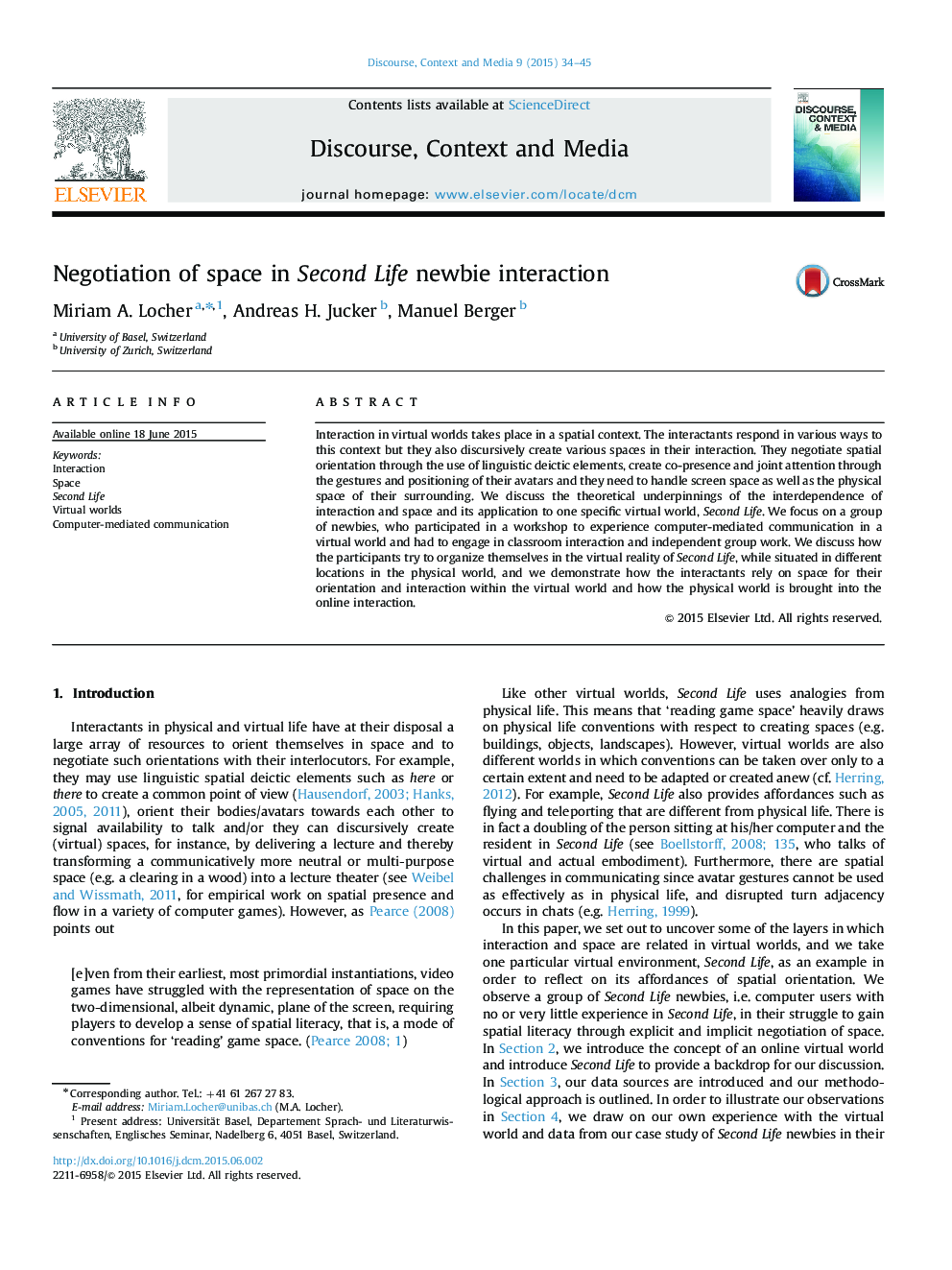| Article ID | Journal | Published Year | Pages | File Type |
|---|---|---|---|---|
| 1100536 | Discourse, Context & Media | 2015 | 12 Pages |
•We observe how users new to the virtual world Second Life negotiate virtual space.•We observe how they develop a sense of spatial literacy and of ‘reading’ game space.•They frequently rely on analogies between virtual and physical life.•Established deictic practices are drawn on for spatial orientation in virtual life.
Interaction in virtual worlds takes place in a spatial context. The interactants respond in various ways to this context but they also discursively create various spaces in their interaction. They negotiate spatial orientation through the use of linguistic deictic elements, create co-presence and joint attention through the gestures and positioning of their avatars and they need to handle screen space as well as the physical space of their surrounding. We discuss the theoretical underpinnings of the interdependence of interaction and space and its application to one specific virtual world, Second Life. We focus on a group of newbies, who participated in a workshop to experience computer-mediated communication in a virtual world and had to engage in classroom interaction and independent group work. We discuss how the participants try to organize themselves in the virtual reality of Second Life, while situated in different locations in the physical world, and we demonstrate how the interactants rely on space for their orientation and interaction within the virtual world and how the physical world is brought into the online interaction.
